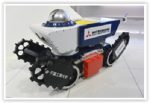ARANZ Medical named Supreme Innovator of the Year
ARANZ Medical, a specialist in 3D scanning and informatics solutions for the healthcare sector, has been named the winner of the Bayer Supreme Innovator of the Year in the 2016 New Zealand Innovators Awards. The company was also named the winner of the Innovation in Technology Solutions category for its key innovations Silhouette and FastSCAN. Dr Bruce Davey, CEO of ARANZ Medical says, “This is a wonderful acknowledgement for our dedicated team who are passionate about developing innovative technology to help people heal people. We’ve replaced some of the most primitive processes in healthcare that hadn’t seen any innovation in decades with highly innovative and sophisticated yet easy-to-use medical technology.” ARANZ Medical’s 3D scanning and information solutions for skin and wound assessment transform clinical assessment processes, improve quality of care, and make healthcare more cost-effective. Key innovations include: Silhouette, an FDA-approved advanced wound surveillance system which supports precise and productive wound management in clinical practice and research; and FastSCAN which enables the custom-fit of orthotics and prosthetics. Dr Davey says, “We can help improve the lives of millions of people worldwide, including high risk groups such as diabetes sufferers and the elderly, by empowering healthcare providers to address challenging medical problems in wound care and orthotics/prosthetics. Silhouette and FastSCAN literally shed light on changes in the skin with a level of accuracy and ease that has not been possible before, so healthcare providers can make better-informed decisions that could lead to better healing outcomes.” The company’s technology is being used in over 35 countries in a range of settings from clinical researchers in rural Africa studying the Buruli ulcer, one of the most neglected tropical diseases, to the largest healthcare providers in the US and UK. Dr Davey says demand for their technology is being driven by diseases like diabetes, […]









